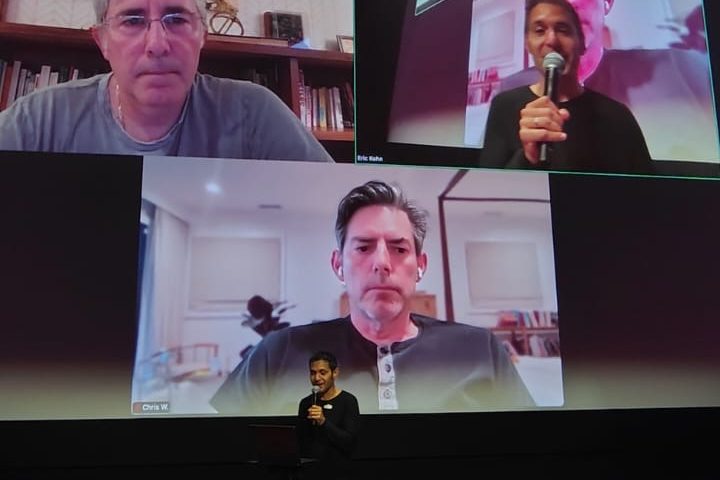Ask Beatty: Our Kids Are in Crisis, What Are We Going to Do?

The Centers for Disease Control and Prevention (CDC) reported that between 2011 and 2021, the number of teens and young adults with clinical depression more than doubled. The suicide rate for 10–14-year-old children tripled. It nearly quadrupled for girls. Nearly 25% of teenage girls made a suicide plan in 2021.
In 2022, Surgeon General Vivek Murthy issued the nationwide “Advisory on Protecting Youth Mental Health.” Murthy’s response came on the heels of what the American Academy of Pediatrics declared to be a state of emergency in child and adolescent mental health here in America.
Murthy’s address painted a stark picture of just how poorly American children were doing before the pandemic: One in five American children between the ages of 3 and 17 had a mental, emotional, developmental or behavioral disorder.
Over the last 10 years, the number of high school students reporting persistent feelings of sadness or hopelessness increased by 40%. Suicide rates among American children ages 10–24 increased by 57% between the years of 2002 and 2018.
IS SOCIAL MEDIA A CULPRIT?
Research psychologist Jean Twenge, author of books iGen and Generations, has spent years poring over mental health statistics and survey data trying to answer this question. In her view, the story in the data is clear: “Our teenage mental health crisis is the direct product of the rise of smartphones and social media.” According to the data, 48% of teens say they go online several times a day, 48% of teenage girls and 43% of teenage boys say they’re online “almost constantly,” and on average, teenagers spend around seven hours and 22 minutes per day on the phone.
HOW SOCIAL MEDIA WORKS ON THE BRAIN
Some researchers have argued that social media platforms drive surges of dopamine to the brain to keep consumers coming back over and over again — much like a drug that people become addicted to. The stimulation can involve constant concerns with how many followers and likes they may have today, this minute or this hour. Impressionable young girls become obsessed about whether they look as hot as some of the other girls in the videos that they are constantly watching and comparing themselves to.
The shares, likes and comments on these platforms trigger the brain’s reward center, resulting in a high similar to the one people feel when gambling or using drugs. The high feels great. It’s intoxicating. But what happens when you’re not getting the hoped for responses or likes? Or worse — when you or your online profile or comments or images are being ridiculed or ignored?
You start to wonder: What’s wrong with me? Am I not smart enough or pretty enough? Without a clear and rational perspective about the ups and downs, inconsistencies and absurdity of social media, many teens find that their moods begin to rise and plummet, resulting in feelings of depression, self-doubt, self-hate and even suicide.
WHAT PARENTS CAN DO
1. Work with your teen to manage their screen time. Like any behavior that can become addictive, a gradual lessening of social media needs to begin with a one-day-at-a-time goal.
2. Communicate with your teen and help them learn to understand and respect healthy social media boundaries. You can help them reorient their relationship with social media from escapism and distraction to enjoyment or information.
3. Agree on long-term goals and strategies to help your teen sustain a healthy relationship with social media.
4. Explain to your teen that likes and followers do not and should not define us, despite what they might believe or feel.
5. Engage in meaningful and empathic conversations with your teen and make sure to listen to their feelings, insecurities and worries about fitting in and being popular.
6. Encourage your teen to cultivate person-to-person friendships and activities including sleepovers, in-person partnering with homework assignments, team sports and person-to-person meet-ups. Many synagogues and churches have youth groups where teens can participate in a variety of in-person programs. The more face-to-face, in-person connections, the better!
WHAT THE SCHOOLS CAN DO
Since our children spend the majority of their days attending school, school personnel — including teachers, guidance counselors, social workers and psychologists — are in a unique position to be able to identify students who are grappling with a variety of mental health and social issues. This enables them to intervene as early as possible when issues begin to surface — even at the first grade level.
As a former school social worker and one of the directors of the Greater Montreal School Social Services program, I have seen first-hand that when school administrators, parents and the community at large are genuinely committed to students’ emotional and psychological wellbeing, sufficient resources can easily be found. The time is now to take the necessary steps to deal with the very real crisis that we are currently seeing and experiencing with our children.
A VALUABLE RESOURCE
There is now a national 24/7 hotline for suicide prevention and other depression crises: 988. A New York group lobbied for this for years, and it has just launched, not more than three months ago. It is called the 988 Lifeline.
Beatty Cohan, MSW, LCSW, AASECT is a nationally recognized psychotherapist, sex therapist, author of For Better for Worse Forever: Discover the Path to Lasting Love, columnist, national speaker, national radio and television expert guest and host of the weekly “Ask Beatty Show” on the Progressive Radio Network. She has a private practice in NYC and East Hampton.
Beatty would love to hear from you. You can email your questions and comments to BeattyCohan.msw@gmail.com. For more info, go to beattycohan.com.









